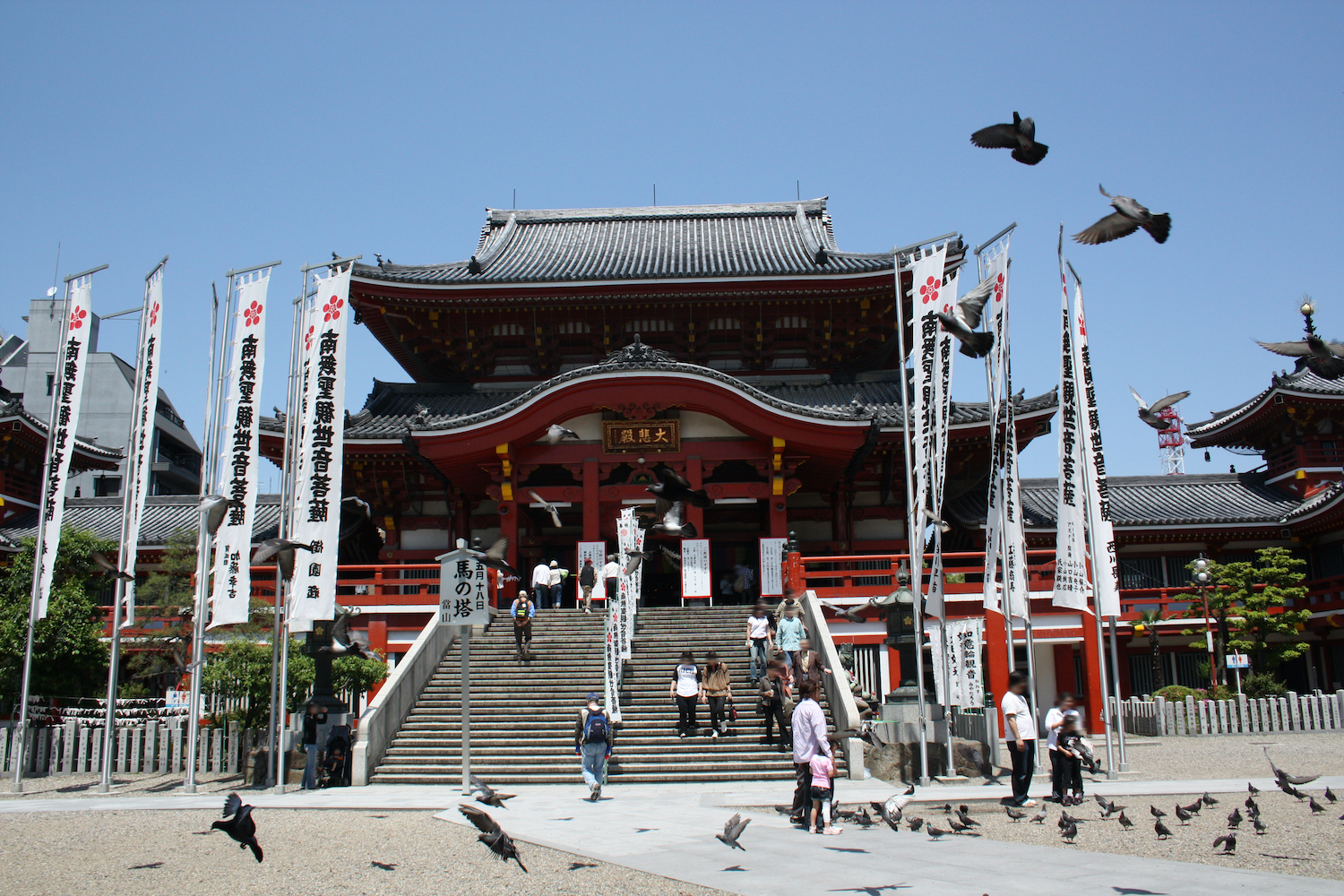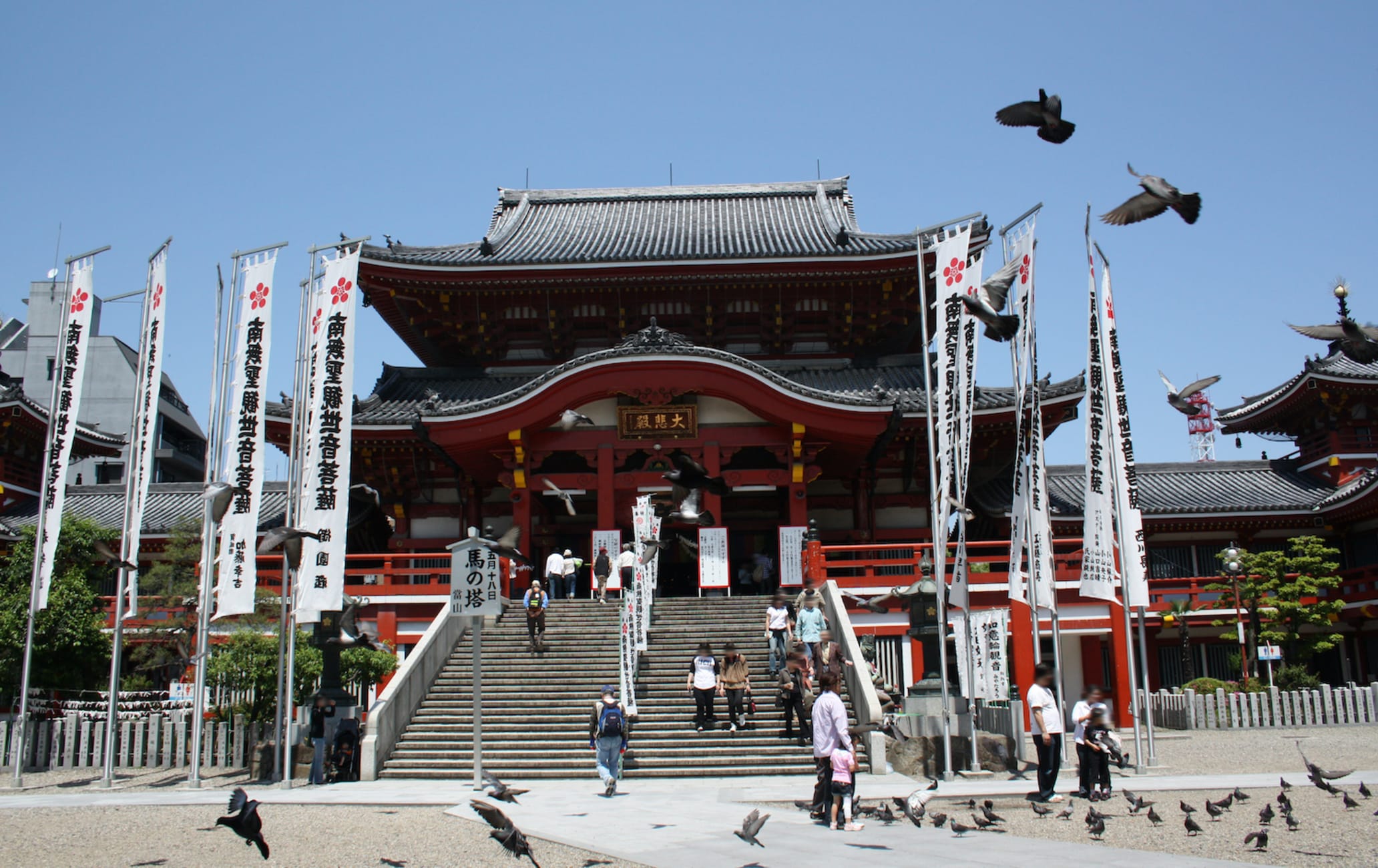ⓒNAGOYA CONVENTION & VISITORS BUREAU
Saved by a shogun, tranquil Osu Kannon offers offbeat festivals, antique markets and global cuisine
In the heart of Nagoya's capital of cool, Osu Kannon Temple is an oasis of historical spirituality that serves as a relaxing stop before diving into the shopping, dining, and nightlife of the city.
Don't Miss
- Antique markets on the 18th and 28th of every month
- Feeding the mobs of hungry pigeons
- The temple's library, which contains some 15,000 works of literature
How to Get There
The temple is just outside Osu Kannon Station, a 12-minute subway ride from Nagoya Station .
From Nagoya Station , take the Higashiyama subway line to Fushimi Station and change to the Tsurumai Line. Osu Kannon is the next stop.
Quick Facts
Osu Kannon is Nagoya's primary Buddhist temple
The temple was originally built in 1333 in modern-day Gifu Prefecture
To save it from repeated flooding, the temple was transfered to Nagoya by shogun, Tokugawa Ieyasu (1543-1616)

ⓒNAGOYA CONVENTION & VISITORS BUREAU
A temple of tranquility inside the city
Sitting at the entrance to a bustling shopping district, the striking red temple offers a sense of calm and spiritual retreat the moment you pass through its outer gates. The Osu Kannon you see today is a 20th-century reconstruction—the original having burned down in the 1820s.
Grand structures housing simple treasures
The focal point of worship here is a wooden statue of Kannon, the Buddhist goddess of mercy, said to have been carved by Shingon Buddhism founder Kobo Daishi (774-835). It miraculously escaped the fires that destroyed much of the original building.
Beneath the main hall is the Shinpukuji Library, which houses over 15,000 classical Japanese and Chinese texts, including seven of the oldest known handwritten copies of the Kojiki, the chronicle of Japan's early history and myths compiled in 712.
A place for festivals and parades
Osu Kannon and the nearby shopping arcade is the location for many events throughout the year. February 3 in Japan is Setsubun, celebrating the coming of spring, and from large raised platforms outside the temple, monks shower beans on the public below to ward off bad luck.
On the closest weekend to March 17th, you can join Nagoya's Irish community as they parade through the arcade to celebrate St. Patrick's Day. In October, you can see the weird, wonderful, and supremely talented artists, musicians and acrobats of the Osu Street Performers Festival.
If you are in Nagoya on the 18th of the month, don't miss the Osu antique market held in the temple grounds. There are around 60 stalls selling souvenirs, antiques, fine arts, and kitsch. The surrounding Osu Kannon streets usually join in, and on the 28th, the more urban temple Banshoji on the other end of the shopping arcade hosts a similar market, and is also home to a unique mechanical puppet show.
Shopping and street eats
Osu is well known in Nagoya for its alternative, even outlandish style, making it the city's own Harajuku and Akihabara combined. As you stroll through the streets of the bustling arcade, it's not unusual to see locals in outrageous street fashions, shopping for their next sartorial statement. Some are happy to pose for photos, but don't forget to ask permission first.
The district is home to plenty of secondhand fashion stores like Komehyo, souvenir shops, and retro toy and game stores like Super Potato (used game store) and Mandarake (secondhand manga bookstore) near Kamimaezu Station.
When you ask a Japanese person about Nagoya , they'll say it has great food, and Osu Kannon is no exception. Everywhere you go, the streets are filled with the scents of various stalls selling fried chicken, takoyaki, Turkish kebabs, and more. There's even an open-air Brazilian kitchen, Osso Brasil.
In summer, the shaved ice and bubble tea stands are a must. No matter when you go, there are plenty of restaurants for you to enjoy, from chic, bright bars serving new craft beers, to well-worn cafes that have been excelling in rich Nagoya cuisine for decades. An excellent end to a day of historical culture.

























































